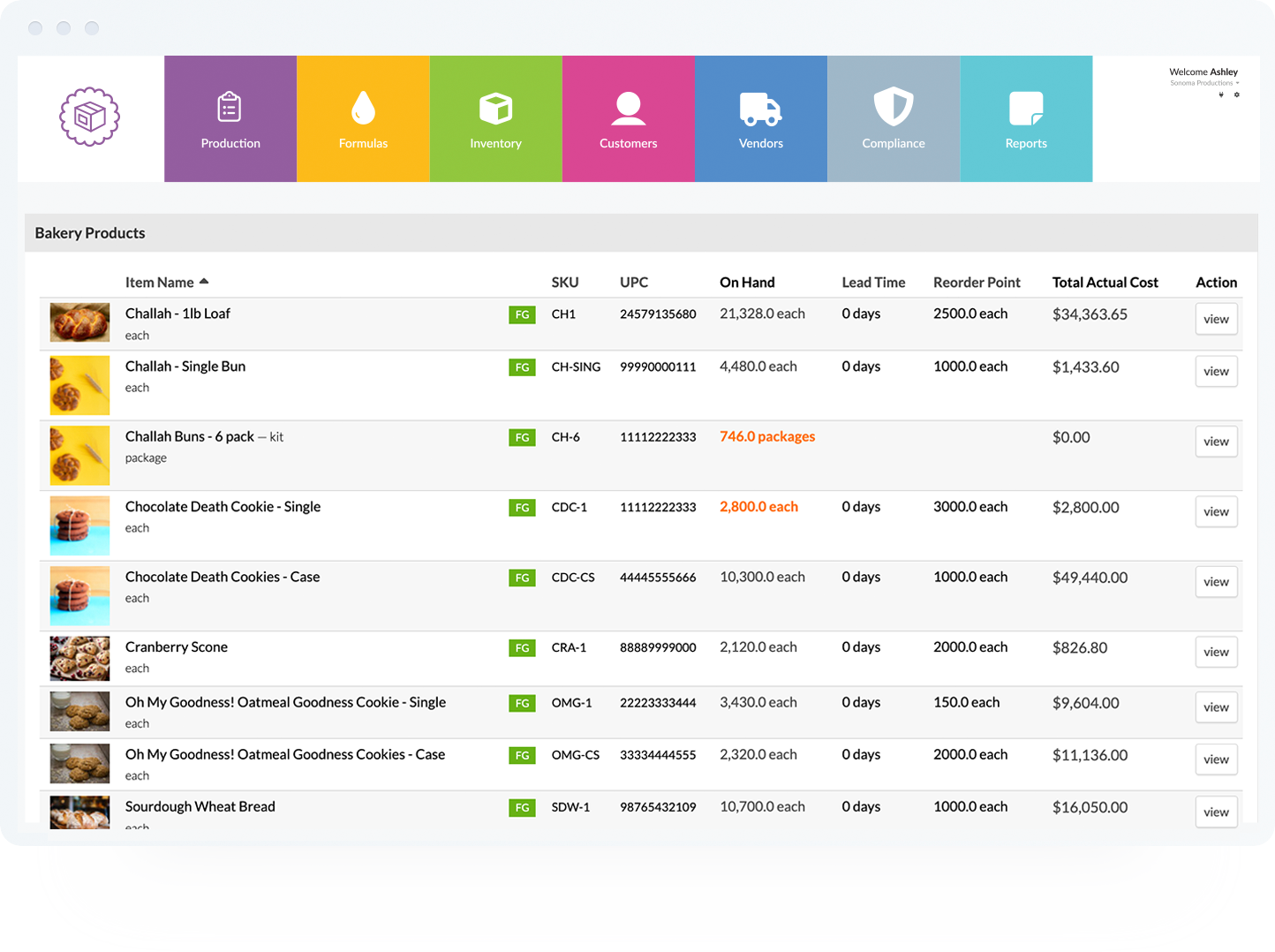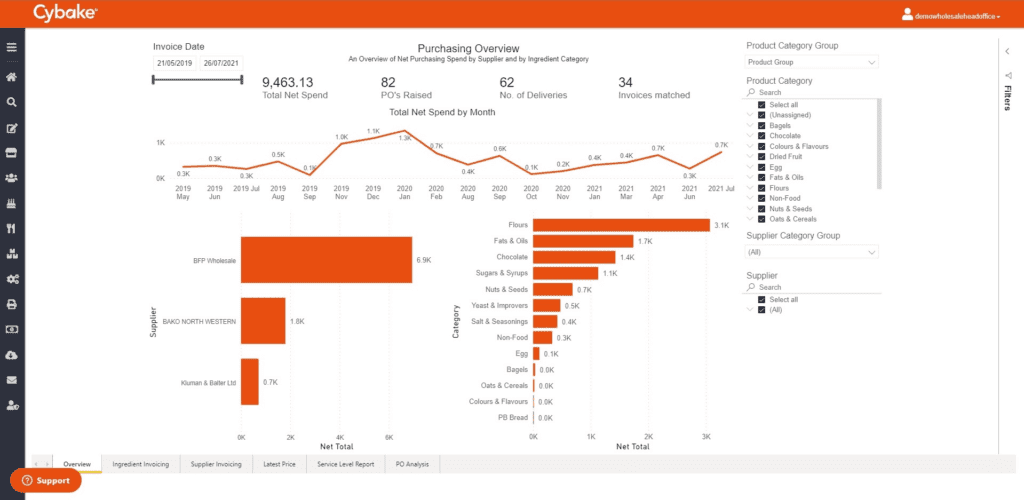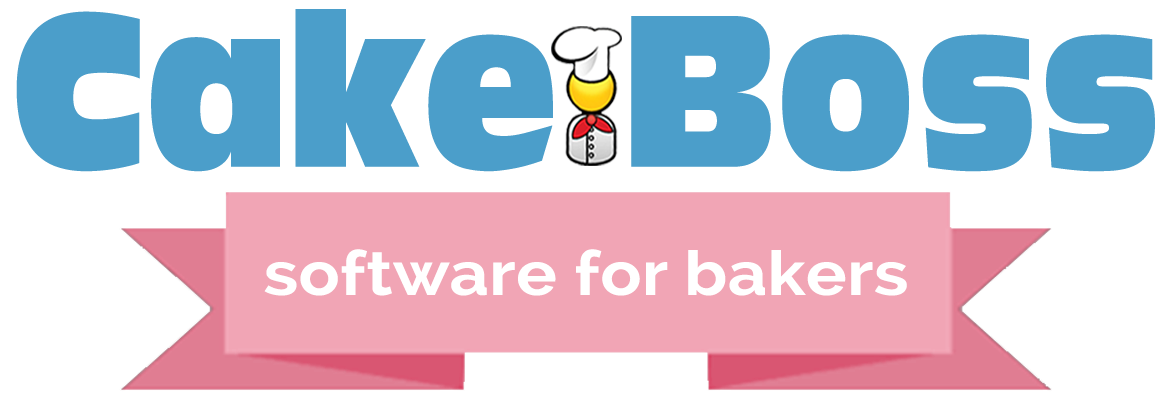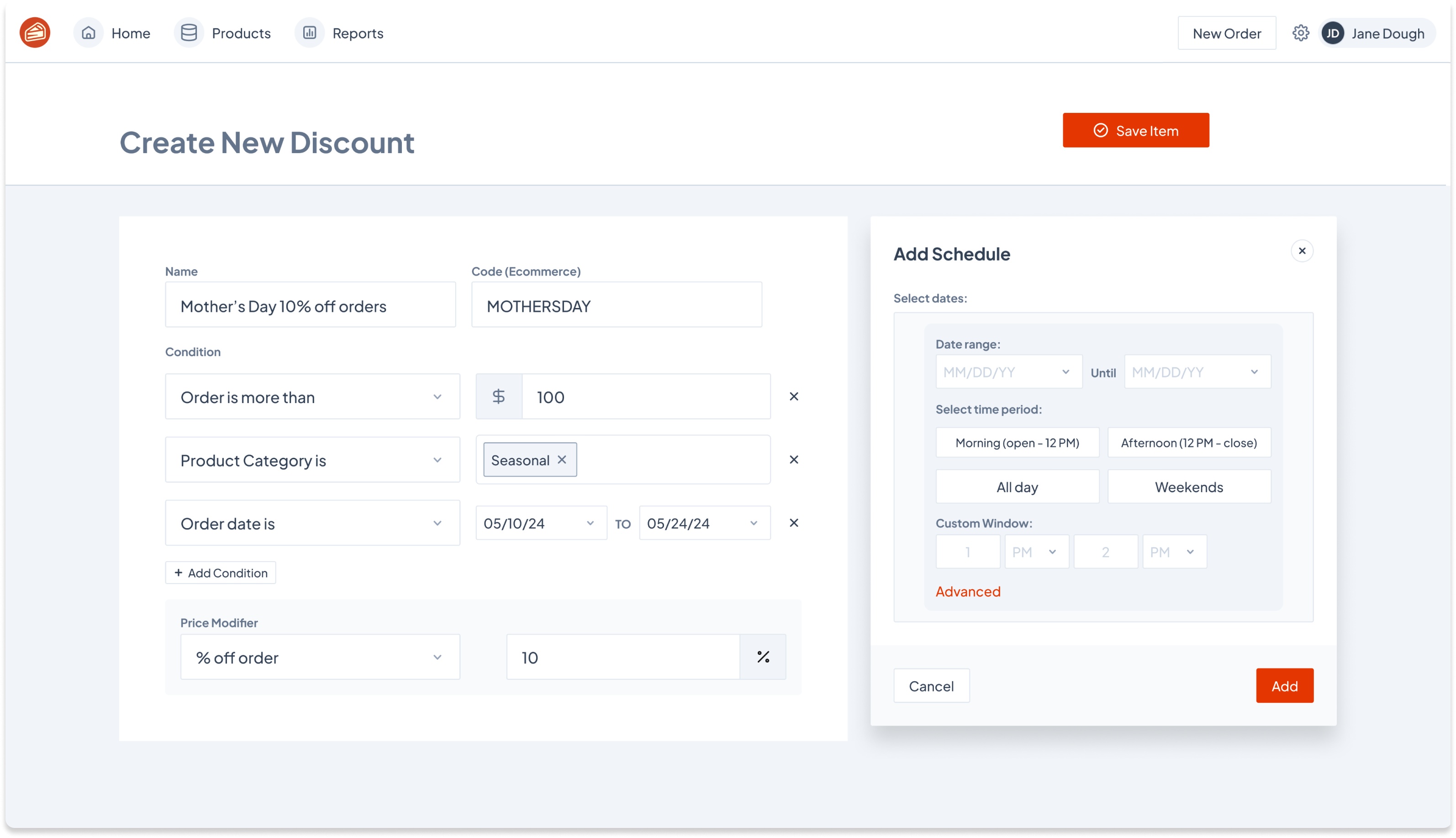Short shelf life, thin margins, and shifting demand make bakery operations hard to control. To keep up, teams must balance fresh production with accurate ordering, clear labels, and fast service across in-store and online channels. The right bakery management software brings orders, recipes, production, inventory, costing, labeling, and traceability into one system. It helps bakeries schedule bakes based on demand, track lots and expiry dates, prevent stockouts, support recalls and audits, and connect with point of sale (POS), e-commerce, and accounting systems.
This guide features the best bakery management software solutions, their features, pros and cons, and how they can support bakeries.
What is Bakery Management Software?
Bakery management software tracks and manages every part of a bakery. It captures important data, including ingredient sources, recipe costs and yields, production and packing, shipping, storage, and display. It uses barcodes, scales, kitchen screens, label printers, and POS links to provide real-time views and instant access to product histories. Businesses can plan daily bakes, price custom cakes, reserve stock for orders, and find any batch in seconds during recalls. Bakery management software reduces waste, avoids stockouts and expired goods, improves consistency, and protects margins. It supports allergen labels and lot tracing, which builds customer trust. Bakeries that aim for quality, speed, and compliance rely on it.
Why Bakeries Need Specialized ERP/Management Software: Features to Support Your Business
Bakery management software centralizes orders, recipes, production, inventory, costing, labeling, and traceability. It replaces scattered spreadsheets with a single source of truth, so teams see what to make, what to buy, and what to ship in time to meet demand. These systems act as real-time control points. They verify ingredients and allergens, track batches across stages, and keep labels aligned with specifications. With accurate data in one place, teams can price confidently, plan bakes, and document every step.
Beyond control, bakery software delivers clear operational gains. Here are a few benefits of using a bakery management software:
● Recipe and batch costing with live unit costs and margin visibility.
● Purchasing automation that suggests buys and creates POs at low stock.
● Expiry and waste controls with alerts and cycle counts.
● Lot traceability (e.g., traceability) with FIFO or FEFO picking and instant recall reports.
● POS connectivity for unified sales + production (see what a POS system is).
Top Bakery Management Software Solutions
Bakery management software helps bakeries take orders, plan bakes, manage recipes and inventory, and track costs in real time. Here are the best bakery management software solutions:
1. Wherefour


Wherefour is ERP software with true cloud-based storage. Built for food manufacturers and producers, it gives real-time visibility into ingredients, batches, finished goods, costs, expiration dates, and reorder alerts. Teams stay audit-ready with lot codes, COAs, and quick recall reports while they manage day-to-day production and inventory.
Wherefour builds traceability into every workflow. Users can track each ingredient through production, run forward and backward traceability or recall reports in seconds, see which customers received specific lots, and keep a clean digital record. The cloud system works on any device, so managers can monitor and act from anywhere.
Features:
● Automate lot code tracking across raw materials, production, and deliveries.
● Monitor production from start to finish with full visibility at each stage.
● Generate instant recall reports by lot, customer, or date.
● Forecast inventory with built-in MRP tools.
● Maintain compliance (FDA, SQF, HACCP, etc.) with COAs and logged transactions (compliance).
● Integrate with 5,000+ platforms (e.g., QuickBooks, Xero, ecommerce) (integrations).
● Multi-location inventory with expiry tracking and reorder alerts; barcodes (GS1, Code 128, Code 93).
● Customizable B2B portal and automated alerts for expiring products.
Pros: Functionality and ease of implementation; purchase order generation & inventory management; easy of use, total functionality, affordable, and great customer support.
Cons: PDF template editor takes time to master, but it is made easier by the customer support team’s quick help.
Pricing: Custom quotes. Schedule a free demo.
2. Cybake


Cybake is bakery management software for retail and wholesale bakeries. It covers order capture, production planning, shop stock replenishment, recipe & allergen data, delivery scheduling, invoicing, and reporting, plus integrations to POS, accounting, labeling, weighing, and EDI.
Features:
● Inventory via POS reconciliation of delivered/sold/waste/transfers.
● Automated store ordering from historical sales.
● In-store production planning with live POS data.
● Wholesale online ordering portal.
● Cloud on Azure with backups & analytics.
Pros: Traceability & compliance; production reports, picking, waste & management reports.
Cons: Can be difficult to use at times.
Pricing: Not listed.
3. CakeBoss


CakeBoss serves home and small bakeries with order entry, calendar scheduling, recipe costing/pricing, shopping lists, invoicing, and sales tax configuration.
Features:
● Order management with due dates & schedule.
● Customer & vendor organization.
● Reports for expenses, mileage, sales tax, revenue, upcoming orders.
● Calendar management with color-coded order types.
Pros: Branded invoices/quotes.
Cons: Interface could use an update.
Pricing: $149 first year, then $20/year.
4. BakeSmart

BakeSmart is bakery + POS for retail shops (counter & online orders, items/pricing/discounts, customer records). Cake Matrix prices custom cakes; same-day ecommerce offers in-stock pickup.
Features:
● Customer accounts, loyalty, tax-exempt data across POS & ecommerce.
● Configurable products/pricing, seasonal menus and bundles.
● Lead times & future orders tracking; per-location controls.
Pros: Easy to learn & customizable POS; online store integration saves time.
Cons: Install fees & subscriptions can strain budgets; support/onboarding complaints.
Pricing: Annual: $99/mo; Monthly: $119/mo.
5. Craftybase


Craftybase tracks ingredients, batches, and finished goods with lots/expiry; keeps full purchase-to-sale history; connects to Shopify, Etsy, PayPal.
Features:
● Stocktakes and cycle counts; adjustments from variances.
● Manufacture records that deduct materials and add finished stock.
● Lot & expiry tracking with traceability.
● Pricing guidance from actual material & labor costs.
Pros: Combine expense entry with manufacturing and inventory tracking, Generate COGS and tax reports for business needs
Cons: Start-up data entry takes time, No public API; forces manual transfers to other apps
Pricing: Monthly — Pro $24, Studio $49, Indie $99, Business from $149. Yearly — Pro $20, Studio $41, Indie $83, Business from $124.
6. Gofrugal


Gofrugal offers ERP for retail/restaurant/distribution: recipes, BOM production planning, shelf-life inventory, online orders, CRM/loyalty, barcodes, central kitchen, and integrations.
Features:
● Quality control: Monitor batch quality and condition before service.
● Purchase management: Create and track POs, manage vendors, and automate reordering.
● Vendor performance analysis: Analyze margins, delivery times, product quality, and pricing consistency.
● Inventory management: Track ingredient and product stock, run daily audits, and resolve stock discrepancies with a web dashboard.
● Contactless dine-in: Let's customers order through an intuitive QR menu, make special requests, and check out with online payments.
Pros: Easy to use, easy billing, and inventory maintenance, Transaction history with a track of branch sales and Order records.
Cons: Customer support performs performs slowly, Limitations in customization
Pricing: Not listed.
7. Toast

Toast is restaurant POS & management for cafes/bakeries: counter & to-go, kiosks, kitchen display, online ordering, menu tools, and reporting. With xtraCHEF, it adds recipe costing, invoice processing, and inventory.
Features:
● Recipe costing and food cost: Manage recipe costing and inventory-driven food cost.
● Mobile order and pay: Let’s guests scan a QR code to view the menu, order, and pay from their phones.
● Kitchen display system: Route orders to kitchen screens, configure prep stations and expediters, and use grid view to preview incoming orders.
● Reporting: Access reports on sales, labor, customers, and inventory from any location.
Pros: Real-time insights; customizable workflows.
Cons: Hardware failures/warranty replacements; email builder is clunky.
Pricing: Starter Kit $0/mo; POS $69/mo; Build Your Own: custom.
How to Choose the Best Bakery Management Software for Your Business: Features to Look For
When choosing bakery management software, it is important to match the tool to your sales model, production flow, and growth plans. Here are key features to look out for:
● Real-time inventory tracking: A bakery’s success depends on precision and timing. Real-time inventory tracking keeps your ingredient levels accurate across all stages of production. It updates automatically as items are used, sold, or received, helping teams avoid stockouts and overproduction. The system should show live counts, monitor lot and expiry dates, and support barcode or QR scanning for quick checks. By linking inventory to recipes and sales, you always know what is available, what is aging, and what needs replenishment.
● Automated re-ordering: Ingredients move fast in any bakery, so automated re-ordering prevents delays and waste. This feature allows you to set minimum stock levels and reorder points for each ingredient or packaging item. When a threshold is reached, the software automatically creates or recommends purchase orders, sends alerts, or notifies preferred suppliers. Smart systems factor in sales forecasts, supplier lead times, and production plans to calculate what to buy and when. The result is a steady supply of fresh ingredients without excess inventory tying up cash.
● Supplier management tools: A dependable supply chain keeps bakery operations smooth. Supplier management tools store vendor details, track purchase histories, and compare pricing across suppliers. The right system also manages purchase orders, delivery receipts, and invoices in one place. Some platforms allow teams to attach quality or compliance documents like allergen reports and certificates of analysis to each lot. These features simplify traceability, improve cost control, and help ensure consistent ingredient quality across batches.
● Multi-location support: For bakeries that operate more than one shop or facility, multi-location support is essential. This feature shows ingredient levels, production status, and sales data for each site in real time. Managers can transfer stock, monitor performance, and balance supply between locations without manual spreadsheets. The system should also handle site-specific reorder points, permissions, and reporting so every branch stays stocked and synchronized. Strong multi-location control helps growing bakeries expand confidently while maintaining accuracy and consistency across all outlets.
Bakery Inventory Management Best Practices
Use Batch and Expiry Tracking
Batch and expiry tracking ties each ingredient and product to a specific lot and date, so staff rotate with FEFO, pull near-expiry first, and stop expired items at the counter. This cuts waste, speeds recalls, keeps labels and audits clean, and protects margins with accurate lot-level write-offs. It also improves forecasting by revealing real shrinkage and helps the bakery maintain the consistent freshness customers trust.
Standardize Recipes and Portion Sizes
Lock recipes and portions in software to deduct stock and calculate costs the same way every time, reducing variance and protecting margins.Standardize recipes and portion sizes so every batch uses the same ingredients and yields. In the software, lock each recipe and portion, then let the system deduct stock, calculate costs, and price items consistently every time. This cuts variance, stops overfills, and keeps margins steady across shifts and locations. Teams forecast purchases with better accuracy, train faster with clear steps, and spot issues when actual use drifts from targets. Consistent portions also ensure allergen and nutrition data are accurate, reducing risk and keeping labels correct.
Conduct Physical Audits Regularly
Conduct physical audits regularly to identify gaps between records and shelves. Use cycle counts, check high-risk ingredients daily, top sellers weekly, and the rest on a set schedule. Compare counts to the system, trace differences to waste, recipes, receiving, or transfers, and fix the cause. Spot-check lot and expiry dates, verify FEFO rotation, confirm labels, and count before opening or after close to limit movement. Use blind counts with barcode scanning for accuracy. Regular audits keep inventory accurate, prevent stockouts and overbakes, cut waste, protect margins with reliable COGS, improve par levels and reorder points, speed recalls and compliance checks, and reveal training or process issues early.
Forecast Demand Based on Seasonality
Forecasting demand by season lets a bakery align purchasing and production with real peaks and lulls. The team analyzes past sales by week and holiday, notes weekend patterns, school terms, weather swings, and local events, then sets par levels and ingredient orders to match lead times. Staff stage doughs and components ahead of spikes, right-size batches on slow days, and schedule labor and routes to fit the forecast. The bakery keeps fresh items on hand, avoids stockouts before holidays, and cuts overbakes after demand drops. This practice reduces waste, protects cash flow, shortens wait times, and maintains margins. It also improves supplier coordination, since buyers lock in quantities earlier and secure delivery slots that support on-time bakes and pickups.
Explore Bakery Management Software From Wherefour
Bakeries must protect product safety, comply with labeling and allergen requirements, and respond quickly to shifting demand and supply disruptions. Relying on manual logs, spreadsheets, or disconnected tools increases errors and slows decisions.
A modern bakery management ERP gives real-time visibility across operations, tracking ingredients and lots, monitoring expiry dates, planning production, managing suppliers, and generating audit-ready reports in a few clicks. With the right software, teams automate data capture, cut manual entry, and make decisions with accurate, accessible information.
Wherefour provides end-to-end visibility from raw materials through production and delivery. Teams can rework a batch, run forward or backward lot lookups, and export audit data when needed. The system maintains a complete digital trail to support inspections and compliance events.
Best Bakery Management Software FAQs
Is there an app to track baking orders?
Yes. Modern bakery management apps can track baking orders from start to finish. They capture orders online or in-store, convert them into work orders, and update their progress in real time. The system automatically deducts ingredients, tracks batches and expiry dates, prints labels, and links packing, delivery, and invoicing to each order.
Wherefour simplifies this entire workflow. It connects your e-commerce platforms directly to your production and inventory modules, so orders sync automatically. You can view live order status, print GS1 or Code 128 barcodes, and generate traceability or recall reports instantly. From ingredient prep to delivery confirmation, every step stays visible and compliant without duplicate entry.
How to manage inventory in a bakery?
Effective bakery inventory management keeps stock fresh and production consistent. The process starts with forecasting sales by day and season, then setting target amounts for each ingredient. Standardize recipes and portion sizes so every batch uses the same quantities. Rotate older stock first, count fast-moving items daily, and plan orders around supplier lead times.
Wherefour supports all of this in one system. It tracks inventory in real time across multiple bakery locations, showing current stock, costs, expiration dates, and reorder alerts. Automated FIFO and FEFO tracking make sure older ingredients get used first, while built-in barcode scanning and label printing keep records accurate. You can even attach COAs and QA results to each lot for complete traceability. The result: less waste, cleaner audits, and better cost control.
What is the best software for a bakery?
The best software aligns with the bakery’s model and integrates orders, recipes, production, inventory, labeling, and costing into a single system. It supports a lot, and expiry tracking, purchasing with alerts, multi-location control, and integrations with POS and accounting.
With Wherefour, bakeries can cut labor and inventory costs by up to 25%, stay recall-ready at all times, and keep every production step, from dough mixing to final delivery, visible and documented. Its integrations with QuickBooks, Xero, Microsoft Dynamics, and Shopify make it easy to synchronize financials, sales, and inventory data in real time, eliminating double entry, reducing errors, and giving bakeries a complete, up-to-date view of their operations.

